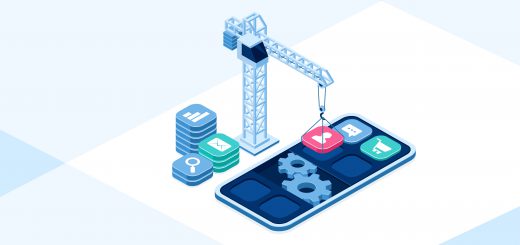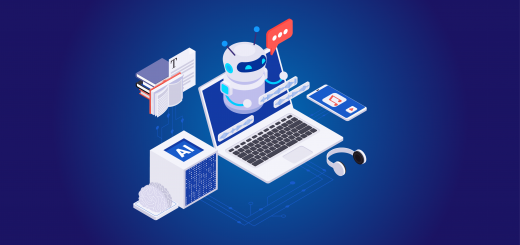The Ethics of AI: Addressing Bias and Accountability in Software Development
As technology continues to advance at an exponential rate, society finds itself grappling with the ethical implications of these advancements. One such area of concern is the development of artificial intelligence (AI) and the potential for bias and lack of accountability in software development.
In this blog, we will dive into the complex landscape of AI ethics, exploring the challenges and discussing possible solutions. Join us as we navigate the intricacies of this important topic, seeking a deeper understanding of the ethics of AI and the critical need for addressing bias and accountability in software development.
What is Bias in AI?
Bias in AI refers to the systematic and unjustified favoritism or discrimination towards certain individuals or groups based on various attributes, such as race, gender, socio-economic status, or other protected characteristics. These biases can infiltrate AI algorithms, leading to unfair and discriminatory outcomes.
1. Racial Bias: Racial bias in AI occurs when algorithms discriminate against individuals based on their race or ethnicity. For example, facial recognition systems that are trained on predominantly white faces may struggle to accurately identify individuals with darker skin tones, leading to potential misidentifications and biased outcomes.
2. Gender Bias: Gender bias in AI arises when algorithms favor or discriminate against individuals based on their gender. This can be seen in hiring algorithms that disproportionately recommend male candidates over equally qualified female candidates, perpetuating gender disparities in the workplace.
3. Socio-Economic Bias: Socio-economic bias in AI occurs when algorithms favor or discriminate against individuals based on their socio-economic status. For instance, loan approval systems that rely on biased historical data may unfairly deny loans to individuals from low-income backgrounds, exacerbating existing inequalities.
Examples of Biased AI Systems
Let’s see some of the real-life examples of AI biases in today’s market!
1. Facial Recognition Technology: Facial recognition systems have come under scrutiny for their potential biases. In 2018, a study conducted by the National Institute of Standards and Technology found that many facial recognition algorithms exhibited higher rates of false positives for Asian and African American faces compared to Caucasian faces, indicating racial bias within these systems.
2. Hiring Algorithms: AI-powered hiring platforms have been criticized for perpetuating gender biases. In one notable case, Amazon developed an AI recruiting tool that was trained on historical resumes submitted to the company. However, the system quickly started penalizing resumes that included terms more commonly found on women’s resumes, leading to biased recommendations and reinforcing gender disparities in the tech industry.
3. Criminal Justice Algorithms: AI algorithms used in predicting recidivism rates and determining sentencing have shown biases against certain racial and socio-economic groups. A study from ProPublica found that a widely used algorithm used in the criminal justice system falsely labeled black defendants as having a higher risk of reoffending compared to white defendants with similar backgrounds, highlighting racial bias in these systems.
Addressing Bias in AI Development
Artificial Intelligence (AI) has become an integral part of our daily lives, impacting various industries and sectors. However, there has been growing concern about the presence of bias in AI systems. Bias can occur at different stages of AI development, including data collection, algorithm design, and model training. So how to address those biases? Let’s see!
- Ethical Data Collection: It is crucial to adhere to ethical data collection practices to avoid perpetuating bias. This involves obtaining consent from individuals whose data is being used, ensuring anonymity and privacy, and being transparent about the data collection process. By following ethical guidelines, developers can minimize the potential for bias in the data used to train AI models.
- Bias-Aware Algorithms: Developers should design algorithms that are explicitly built to address bias. This can involve incorporating fairness metrics into the algorithm design process, which enables the identification and mitigation of bias during model training. By using techniques like equalized odds or demographic parity, developers can ensure that the algorithm treats all individuals fairly, regardless of their demographic characteristics.
- Diverse Training Data: Similar to data collection, having diverse training data is crucial for reducing bias in AI models. By including a wide range of examples from different demographics and backgrounds, developers can create models that are less prone to bias and better equipped to handle real-world scenarios.
- User Feedback Mechanisms: Encouraging users to provide feedback on AI systems is crucial for identifying bias that might have been missed during development. By creating channels for users to report biased experiences, developers can gain valuable insights and address bias promptly.
Final Thoughts
Addressing bias and accountability in software development is crucial in ensuring that AI systems are ethically designed and deployed. The pervasive nature of AI in our lives means that any biases present in the system can have far-reaching consequences, perpetuating discrimination and inequality.
By adopting ethical frameworks and guidelines, developers can actively work towards reducing biases and ensuring fairness in AI algorithms. Additionally, establishing accountability mechanisms and robust monitoring systems can help in identifying and rectifying biases that may emerge over time.



